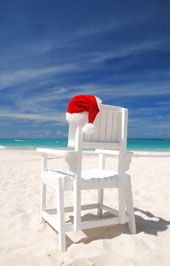
A modest little boat Two True claimed the victory of the famous race this year. The way they did it would be a good screenplay material, though. Suspense, anxiety, heated arguments - all was there. Click on the picture to read the story.



The Sydney to Hobart Yacht Race is an icon of Australia’s summer sport, ranking in popularity with other national events such as the Davis Cup tennis and the Melbourne Cup horse race.
No yearly yachting event in the world attracts such huge media coverage as this race. The race starts on Boxing Day in Sydney, NSW and finishes in Hobart, Tasmania. The course covers a distance of 628 nautical miles from Sydney Harbour to the east coast of Australia, Bass Strait, the Tasmanian east coast, Storm Bay, Derwent River and finally Battery Point in Hobart, Tasmania.
The race has been hosted by the Cruising Yacht Club of Australia since its beginning in 1945 and is run in cooperation with the Royal Yacht Club of Tasmania.
The public and media often focus a lot of attention on which yacht wins Line Honours. It's easy to understand why, because that's the first yacht to cross the finishing line. However, that is often not the Overall Winner. The exact rules to select the Overall Winner have changed over the years. Basically, it's a handicap race where a yacht's finish time is adjusted based on several factors set down in the prevailing rules. In other words, the fastest boat is often not the Overall Winner.
(http://alldownunder.com/oz-u/events/sydney-hobart-race-0.htm)
Go here to watch the start.

The heat of early summer in Australia has an impact on the way that Australians celebrate Christmas and on which northern hemisphere Christmas traditions are followed.
In the weeks leading up to Christmas houses are decorated; greetings cards sent out; carols sung; Christmas trees installed in homes, schools and public places; and children delight in anticipating a visit from Santa Claus. On Christmas Day family and friends gather to exchange gifts and enjoy special Christmas food.
Many Australians spend Christmas out of doors, going to the beach for the day, or heading to camping grounds for a longer break over the Christmas holiday period. It has become traditional for international visitors who are in Sydney at Christmas time to go to Bondi Beach where up to 40,000 people visit on Christmas Day.
Christmas in Australia comes at the beginning of summer and many people no longer serve a traditional hot roast dinner. Cold turkey and ham, seafood and salads are often served instead. It has even become acceptable to serve the traditional Christmas plum pudding with cold custard, ice cream or cream. Pavlova, a meringue base topped with whipped cream and fresh fruit, and various versions of the festive ice-cream pudding have also become popular Christmas desserts.








"At the stroke of midnight on New Year’s Eve 1900, as the clock ticked into 1901 and the 20th century, whistles, gongs, church bells, rattles, pots, pans, accordions and all manner of noise-makers joined the sirens of boats on Sydney Harbour.
It was to be a special day"
Do you know what special day it was? No? Then go here to find out :-)
Let's hear more form the historians because it will lead us to other topics.
"Just after that midnight, a storm broke and winds gusting up to 50 miles an hour swept into Sydney. Forty points of rain drenched the harbour city.
But the New Year’s Day morning of 1901 broke clear and fine, and an eight-kilometre procession headed out to Centennial Park, just beyond Paddington, where the federation rites, uniting the erstwhile separate British colonies into one federal Commonwealth, finally took place."
Australian weather has never been easy on the settlers. Southern regions suffer from severe fires, while the North often faces tropical cyclones and floods.
Click the picture above to watch a heartbreaking account of Black Saturday - the 2009 Victorian Bushfires.
Click the picture below to learn more about the 2009 Queensland Flood.
You will find more information about floods clicking on the little poor fellow below.
We touched upon the topic of the Royal Flying Doctor Service of Australia very briefly last week. This time we'll have a closer look at their work and importance for communities living in distant, remote areas of Australia.











 BLUES
BLUES CATS
CATS EAGLES
EAGLES LIONS
LIONS













